10 Music Production Tips + Tricks you NEED to know in 2022
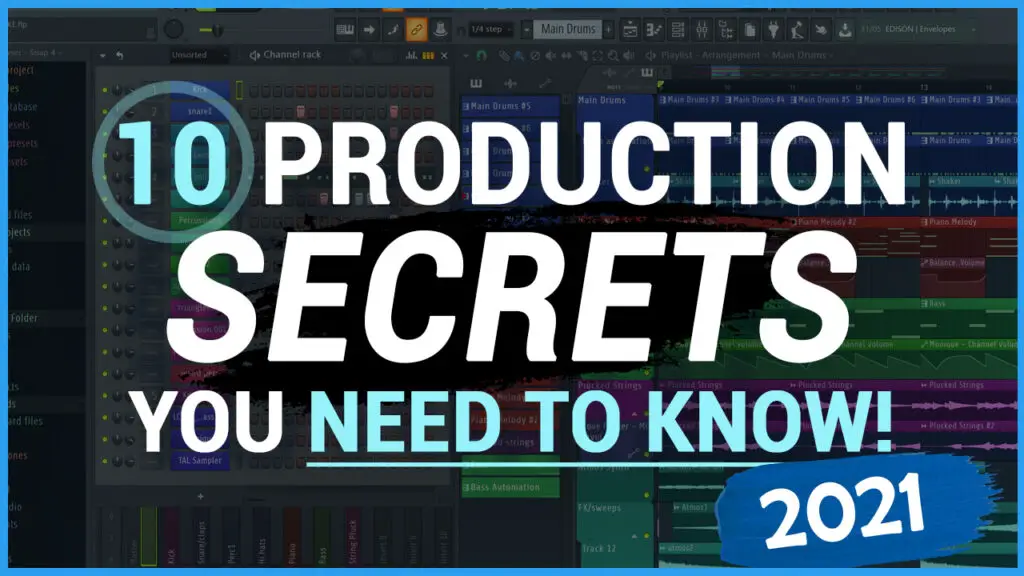
Music Production tips and tricks
Music production is a vast, elaborate subject, and there are so many production tips and tricks out there.
Even if you’ve been producing for many years, you’ll still discover new techniques and production tips on a regular basis.
Remember: it doesn’t matter how much you think you know about music production, there’s always more to learn. For example, I’ve been producing music for over 14 years, and I still come across new methods that improve my workflow and production skillset.
In order to help you improve YOUR music production skillset, I’ve put together this list of 10 music production tips and tricks every producer should know about. I’ve included a range of both production techniques as well as tips on how to improve your creative workflow as well. Enjoy!
10 Music Production Tips and Tricks you NEED to know in 2022
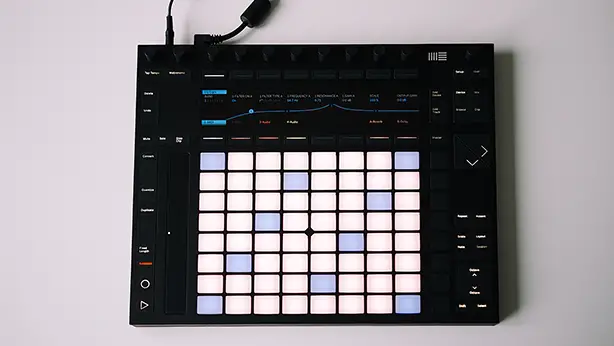
Music Production Tip #1: Add character to your drum hits
The first tip I want to share involves a few ways to add character to your drums and percussion.
A lot of beginners fall into the trap of having no variation within their drum loops, which can result in a robotic, overly sequenced effect.
Using “off-beat” drum hits
One way to add a little character to the beat is by slightly moving specific sounds so they are slightly “out of time”.
Example: Let’s say you have a wide clap sounds playing at the same time as your snare. Try moving the clap slightly before the snare. This will often add a bit of texture to the overall drum hit, as well as adding some groove and making it more interesting for the listener.
Hi Hat variation
Another method for adding character to your drums is to use individual hi hat variation to add realism to your hi hat sequences.
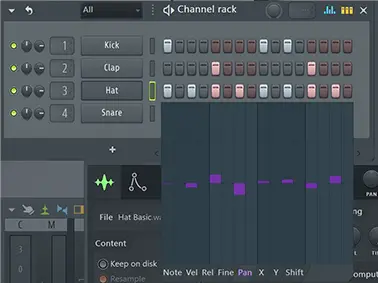
Instead of each hi hat sounding exactly the same, we can use subtle dynamic and spatial changes to mix things up.
Try slightly altering the pan, pitch or volume of individual hi hat sounds. This will create a more “natural” feeling and, again, make the drums more interesting for the listener.
Music Production Tip #2: Understand the Importance of Saturation
Another incredibly important tip is to understand what saturation is and when to use it.
In my opinion, saturation is one of the most underrated effects out there.
If you’re not too sure what saturation is: it’s essentially a lighter version of distortion that can be used to add warmth, intensity and natural harmonics to a sound.
The effect originates from the analog days when audio recordings ran through various pieces of hardware, and it ranges from adding some warm fuzz to the sound, to harder-edged effects as well. For example, if you have a sound that’s a little thin and needs some presence in the mix, adding some saturation usually does the trick.
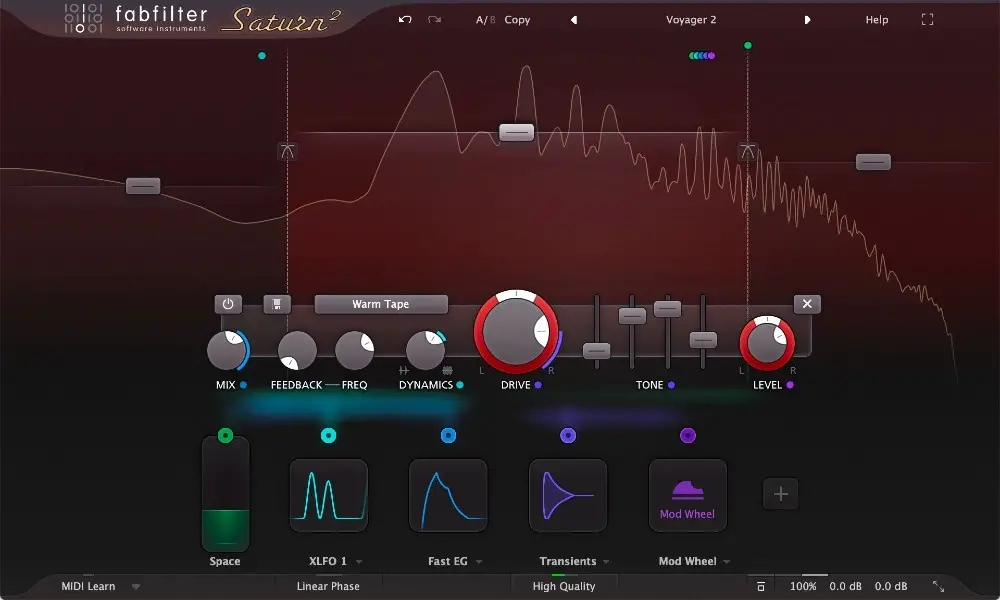
Saturation Plugins
FabFilter’s Saturn 2 (Paid) – This is easily the most powerful, versatile saturation plugin on the market today, and I use it on almost every track I make. If you’ve got a little extra money to spend, I’d definitely recommend checking this one out.
KlangHelm’s IVGI (Free) – This is a FREE saturation plugin which is useful for adding some simple saturation to your sounds. It only has a fraction of the functionality of Saturn 2, but it still sounds fantastic.
Music Production Tip #3: You don’t need to spend thousands on plugins…
I get it, shopping for VST plugins online can be incredibly addictive. Marketplaces like Plugin Boutique or ADSR have literally thousands of plugins to choose from, and often have me feeling like a kid in a candy shop.
However, you don’t NEED to spend a ton of money on plugins to start making good music. In my opinion, you need a few, high quality synths and effect plugins to get you started. For everything else, you can use free or stock plugins.
I’ve released multiple videos and articles on the best free plugins you can find, and there are so many more FREE powerful, versatile plugins out there.
For example, if you download Vital, Surge, Tyrell N6, Monique and Dexed (all of which are completely free synth plugins), you’ve already got a huge amount of creative options and presets to get you started.
Having said that, there are plugins out there that are definitely worth the money, and that don’t really have a free alternative.
But if you think spending thousands of dollars on plugins will instantly make you an amazing producer, then you need to change your mindset. You need to understand that patience, hard work, and creativity is what makes you a good producer.

Music Production Tip #4: Foley / ambient sounds for texture
No matter what genre of music you production, you should experiment with using foley or FX sounds to add texture to a track.
The type of FX you use really depends on the genre you produce.
For example, if you’re a lofi producer, foley “soundbeds” are extremely common, such as coffee shop ambience, rainforest, city sounds etc. Adding a soundbed “under” the track is an incredible way to add atmosphere to a beat.
If you’re a house or EDM producer, crowd noise is a great choice of FX for adding energy to a beat (especially if you sidechain it to the kick).
You can also use unique, experimental foley to add texture to individual drum hits. For example, in Zedd’s hit song “The Middle“, he uses the sound of an axe swinging to emphasize the snare.
Music Production Tip #5: Create an huge sample library
It’s important to build a sample collection so you can easily discover new sounds and find new inspiration. Make sure you download as many free sample packs as you can find, even if it’s not in the genre you produce.
You can find some absolute gems hidden away in free sample packs, including drums, synths, foley recordings and much more.
On top of that, get in the habit of bouncing your own tracks after you finish them. This way you can easily reuse loops and sounds from previous tracks which can massively speed up your workflow.
If you’re wondering where to find free sample packs, here is our popular article on the best free sample packs of all time.
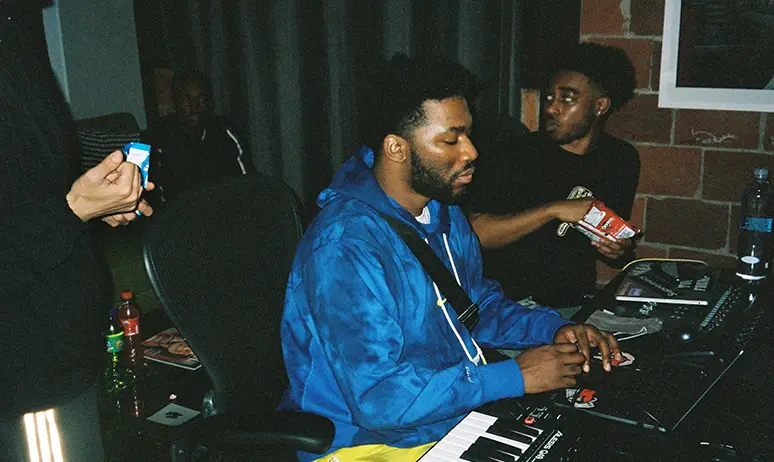
Music Production Tip #6: Collaborate with other artists
As an artist, you should always try to work with as many other artists as possible to gain experience and knowledge.
Even if it’s not in the exact same genre, working with other producers and musicians can give you some great insight into how other people create music.
Remember: there’s always more to learn, and your techniques aren’t always the best ones. I’ve worked with other producers and learnt some of my current favourite production techniques, that I might have never known without those sessions.
I know you probably enjoy the comfort and familiarity of producing on your own without distractions from other people, but believe me, working with others can take your production to the next level.
Music Production Tip #7: Focus on “Big wins” first
The next tip is to focus on achieving “big wins” before moving on to other parts of the production process.
One great way to finish more tracks is to focus on the most important parts of the track first. For example, work on the arrangement, the songwriting and track layering first, making sure you have the foundations of your track.
This gives you a sense of momentum as it feels like you’re getting more done. Then, after you have the foundations you can start working on the details like compression and EQ.
If you’re working on a track and you spend the first 2 hours creating the perfect-sounding drum loop, it’s gonna be really hard to motivate yourself to finish that track. This is because at the end of the day, you haven’t really achieved that much.
However, if you spend the first two hours adding instruments and arranging the song, you’ll feel that momentum and it’s much easier to keep going and finish the track.
Music Production Tip #8: Study the Masters
Tip number 8 is to study the masters in your genre.
Take a look at the artists that inspire you and compare it to your own tracks. Ask yourself: is there more energy in their tracks? Where is that energy coming from?
Using reference tracks is a great way to judge your own mixes. To do this, simply drag a similar track into your DAW and listen to each track one after the other.
If you’re a beginner, using reference tracks can be pretty disheartening. Usually the professional reference track will sound significantly better than your own mix. Remember: the pros usually have their tracks professionally mastered, so you should always use reference tracks with a pinch of salt.
However, this is a good technique for spotting deficiencies in your mix that might not have been obvious before.
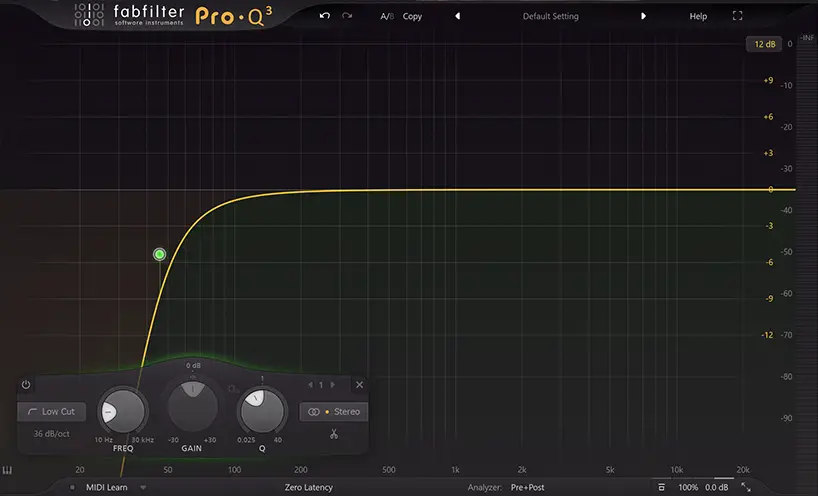
Music Production Tip #9: Understanding the important of high-pass filters
It’s incredibly important that you use high pass filters to remove unnecessary low end frequencies.
The worst mixing mistake you can make is having too many overlapping elements in your bass frequencies. This can lead to what’s commonly called a “muddy mix”.
A lot of the time this can come from simply not high-passing certain sounds, for example vocals and high-end percussion.
For example, let’s say you have a vocal track, and there’s a low rumble on the original recording. If you don’t remove that it’s going to interfere with your bass sounds and possibly ruin the mix.
Music Production Tip #10: Learn music theory
Finally, the last tip is the one that nobody wants to hear…
In order to become a master at music production, you should learn music theory.
This is advice I probably need to give to myself because my music theory isn’t the best. However, the music theory I do know is a massive help, especially when it comes to writing chords and melodies.
If you have absolutely no knowledge of music theory, writing MIDI patterns can be really time consuming and also pretty demotivating as well.
I’m not saying you have to learn everything, but having a decent understanding of the main concepts of music theory can go a long way.

